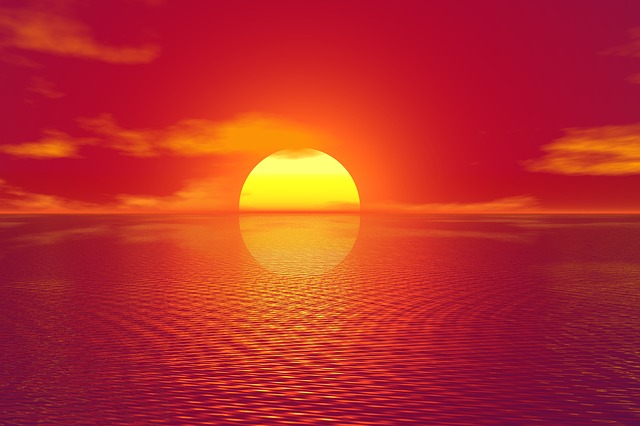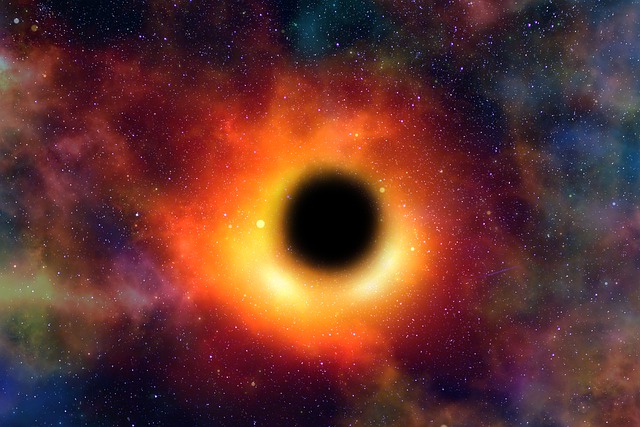*This post may contain affiliate links. This means we may make a commission if you purchase an item using one of our links*
Our Sun, at the center of the Milky Way, will never become a black hole simply because its mass is far too small. Black holes form from supernova explosions that collapse into highly dense concentrations of matter. Our Sun does not possess enough mass to go supernova and will one day transition from a red giant to a white dwarf.
Continue reading to explore the fate of our Sun. While the chances of it ever becoming a black hole are virtually impossible, it is not entirely impossible. And here’s why.
What Will Our Sun Become When It Dies?
Table of Contents

In an estimated five billion years, our Sun will start to die. The Sun creates energy through hydrogen fusion at its core. Still, one day the hydrogen supply will run out, and the Sun will have nothing left to fuse. When this happens, the Sun will begin to collapse on itself.
As this happens, the Sun will fuse heavier and heavier elements at its core. The temperature increase will result in the outer layers expanding so much that they engulf Earth, making it inhabitable for any lifeform as we know it.
This transition is known as the red giant phase, where a dying star enters its final stage of the evolutionary cycle. Here, our Sun will expand 100 and 1000 times its current width, but the surface temperature will cool by around 50%. Still, the core will continue to rise in temperature as it contracts and fuses helium.
Eventually, the helium will run out, and fusion will cease altogether. Our Sun will become a red giant for roughly a billion years before it finally transitions to a white dwarf.
This small and very dense star will not be much larger than an average planet and represents the end point of a star’s life cycle. At this point, the Sun will cool and, after several billion years, fade into a black dwarf.
How Could Our Sun Become A Black Hole?

When a massive star nears the end of its life, it can explode in a spectacular supernova before collapsing into a black hole, a mysterious entity with a gravitational force so strong that not even light can escape.
Some smaller stars possess sufficient mass to explode in a supernova but not enough to collapse back into black holes. Instead, they become an incredibly dense mass known as a neutron star. Still, our Sun doesn’t have the mass for this either – it only has about 10% of the mass required to create a neutron star.
For the Sun to end its life as a black hole, it would need to be around 20 times more massive than it currently is.
Still, there is a way that the Sun could transition to a neutron star. It is improbable but theoretically possible.
The most likely fate our Sun will face is transitioning from a red giant to a white dwarf and eventually a black dwarf. However, once the Sun becomes a white dwarf, its fate could change drastically.
A white dwarf has a mass limit of around 1.4 times that of our Sun. This limit is known as the Chandrasekhar limit; if the mass goes beyond this, the star can explode in a supernova.
Say the Sun became a white dwarf and managed to accrete enough mass to surpass the Chandrasekhar limit. In this case, it could explode in a supernova before collapsing back into a neutron star.
Still, this vast accretion of additional materials would have to occur twice, once for the white dwarf to gain enough mass to go supernova. And twice for the neutron star to accrete enough mass to collapse into a black hole.
But considering that our Sun contains 99.85% of the entire solar system mass, this sequence of events would be highly unlikely to occur. Still, objects pass through our galaxy all the time, so it’s not impossible for the Sun to become a black hole one day.
How Big Would Our Sun Be As A Black Hole?
Alternatively, the Sun could become a black hole if its mass were condensed sufficiently. Theoretically, any object can become a black hole if it can achieve enough compression. This single requirement is known as the Schwarzschild radius, its name derived from the scientist Karl Schwarzschild in 1916.
Using Einstein’s theory of relativity, Schwarzschild and Johannes Droste developed the modern theory of a black hole. It states that significant compression of an object would create an event horizon that encloses a spherical region where the gravity is so immense that nothing can escape.
The Schwarzschild radius dictates that for the Sun to become a black hole, its radius would need to be less than 3 km. Interestingly, the Earth would have to be less than 8.7 mm in width and the moon a minuscule 0.11 mm.
Still, black holes do appear in a range of sizes. For example, scientists believe that primordial black holes formed in the earliest stages of the Universe’s existence, just after the big bang. The size of these black holes could be as small as a single atom, though their mass would equate to that of a large mountain.
In comparison, a supermassive black hole has a diameter roughly equivalent to that of our entire solar system. Evidence suggests that one of these vast entities exists at the center of every galaxy. Indeed, the Milky Way possesses its own black hole called Sagittarius A.
The mass of Sagittarius A equates to roughly four million times that of our Sun
and most likely formed at the same time as the Milky Way galaxy itself.
Summary
Generally speaking, our Sun will never be a black hole. Still, it is theoretically possible that once it transitions to a white dwarf, it could go supernova if it gained enough mass, which could one day lead to it becoming a black hole. More likely, our Sun will expand into a red giant in around five billion years, then cool into a white dwarf over the following billion years.
References
Why the Sun Won’t Become a Black Hole | NASA
Scientists Figured Out When And How Our Sun Will Die, And It Will Be Epic : ScienceAlert
Black Hole | COSMOS (swin.edu.au)
Neutron Stars and White Dwarfs | Center for Astrophysics (harvard.edu)

